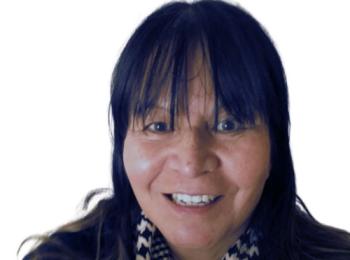Image Caption
Local Journalism Initiative Reporter
Windspeaker.com
Leoni Rivers believes a reconciliation agreement announced this week will be the first of several that will help close the digital infrastructure gap for high-speed Internet and wireless services in First Nations across the country.
Rivers is the CEO of National Indigenous Connectivity Inc. (NICI), which advocates for remote First Nations to have access to spectrum and high-speed Internet.
It was announced on June 2 that NICI had reached a reconciliation agreement with Bell Canada to advance connectivity in rural and remote First Nations communities by 2030.
“I'm very thrilled and excited,” Rivers said. “It’s our first time doing a major reconciliation agreement with a major telco like Bell Canada.”
NICI was developed in 2022.
“That's when we first started talking to 65 First Nations across Canada saying ‘we need support, we need better help for telehealth and tele-education’,” Rivers said. “And ‘we need to connect better with each other. With the technology we have now, we should be having access to it.’ The problem is very few people do have that in the remote community. They're lucky to have their TVs working properly, never mind their phones.”
NICI began actively advocating for its goals in June 2024.
Rivers said the organization has been in ongoing discussions with various telecommunication companies across Canada trying to get support. She is hoping other reconciliation agreements with other companies are announced in the near future.
“It's the first one out of the gate so I think it will be setting a precedent in the foundations for the national group to actually advocate for the Nations that don't have access to high-speed Internet right now,” Rivers said.
And she’s praising details included in the deal.
“I think that Bell’s approach is part of building a better network across all of Canada,” she said. “And from this reconciliation agreement, we're hoping to obtain less regulations, like have better public policies developed and have Indigenous folks participating in those policies.”
At the recent First Ministers meeting in Saskatoon, Canadian Prime Minister Mark Carney said the country will be looking to expedite nation-building projects, speeding things up by cutting out some red tape.
Rivers believes this will be done.
“I was quite surprised, happily surprised, because of the fact that Carney has doubled right now the amount that the government gives for what they call the Investment Loan Guarantee Program for First Nations,” she said. “He's doubled that amount as part of his commitment to make changes quickly within government.”
Rivers also said she believes Carney realizes changes need to be made, especially when it comes to dealing with various Indigenous issues.
“That must be a little wakeup call for the folks that have been running that program for a while and not giving us what we need,” she said. “The real issue comes down to government policies don't reflect First Nations needs in our communities. And never mind remote rural communities. Look at our urban ones. It's still the same. It's just that the landscape is different. The issues are all the same.”
As further proof Carney is serious about improving Indigenous relations, Rivers cited the fact he gave a pair of Indigenous women prominent Cabinet positions.
Mandy Gull-Masty is the minister of Indigenous services while Rebecca Chartrand is the minister of northern and Arctic affairs.
“He has fresh blood in there,” Rivers said. “And you notice for the first time in history, that I'm aware of, we have an Indigenous person (Gull-Masty) working for Indigenous people. And then we also have good representation from the North too (in Chartrand). They're not just token positions. We’ve got two pretty senior Cabinet positions. So, I see some real change coming.”
Rivers said the 2030 timeframe of the NICI/Bell agreement is relatively short.
“Five years is not a long time,” she said. “It will go very quickly.”
Rivers said it currently takes about three years for an Indigenous telecommunications company to get a radio license to operate.
“It takes a long time for the government to review because they jointly do it provincially from wherever the First Nations is trying to set up, like say Saskatchewan or Manitoba,” she said.
“It goes through their government, then it goes to the federal government. Then they get together and review, and you have to follow a strict regimented application process.
“And so, we seem to be always under the microscope, whereas if you’ve got big telcos, their process goes a little faster. But they also have to follow the rules. So, the CRTC gets involved and they actually make sure that everybody's treated equally and fairly, and sometimes those policies conflict with each other. They have to sort that out. So, it's always a waiting game from my perspective.”

